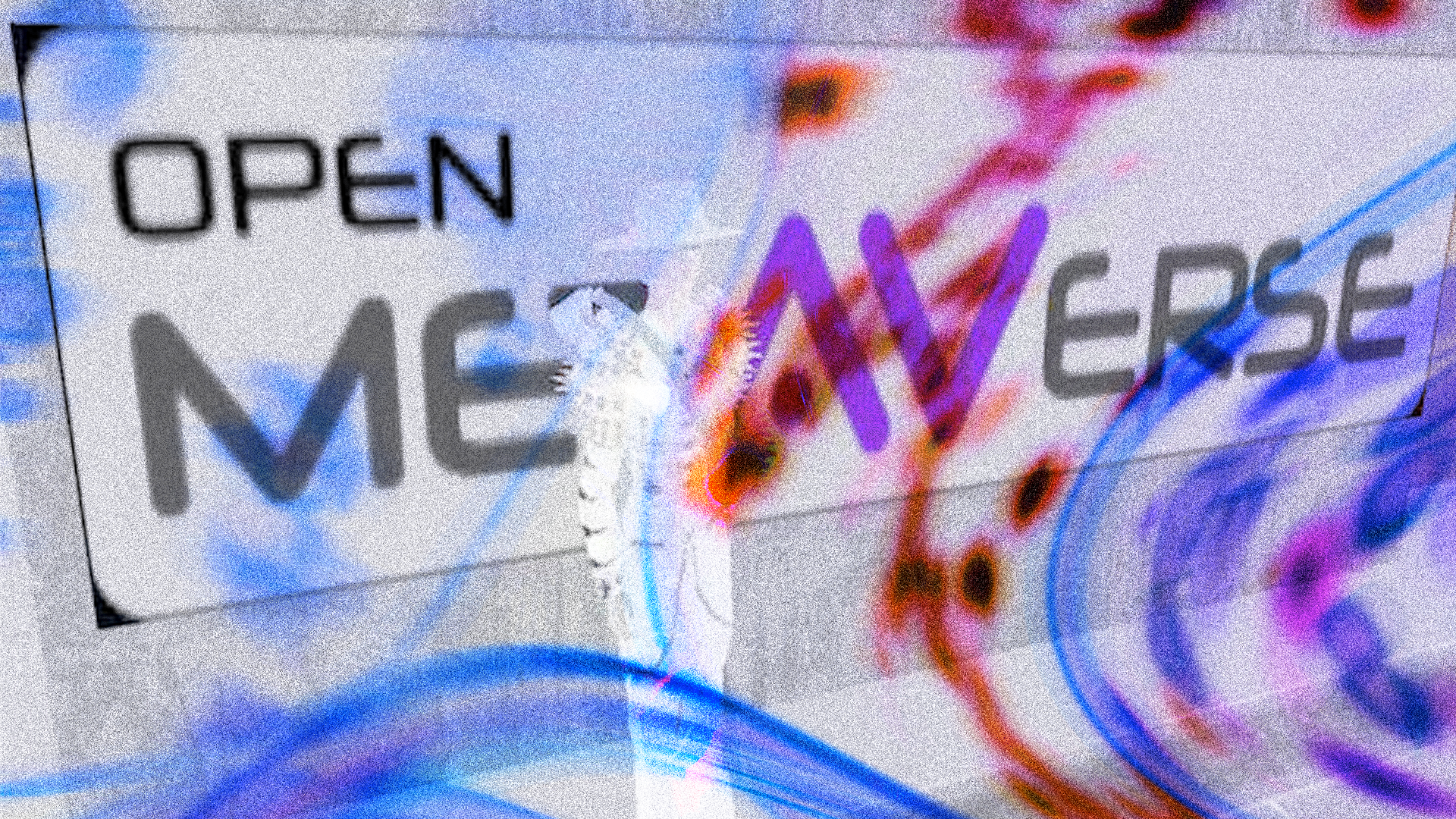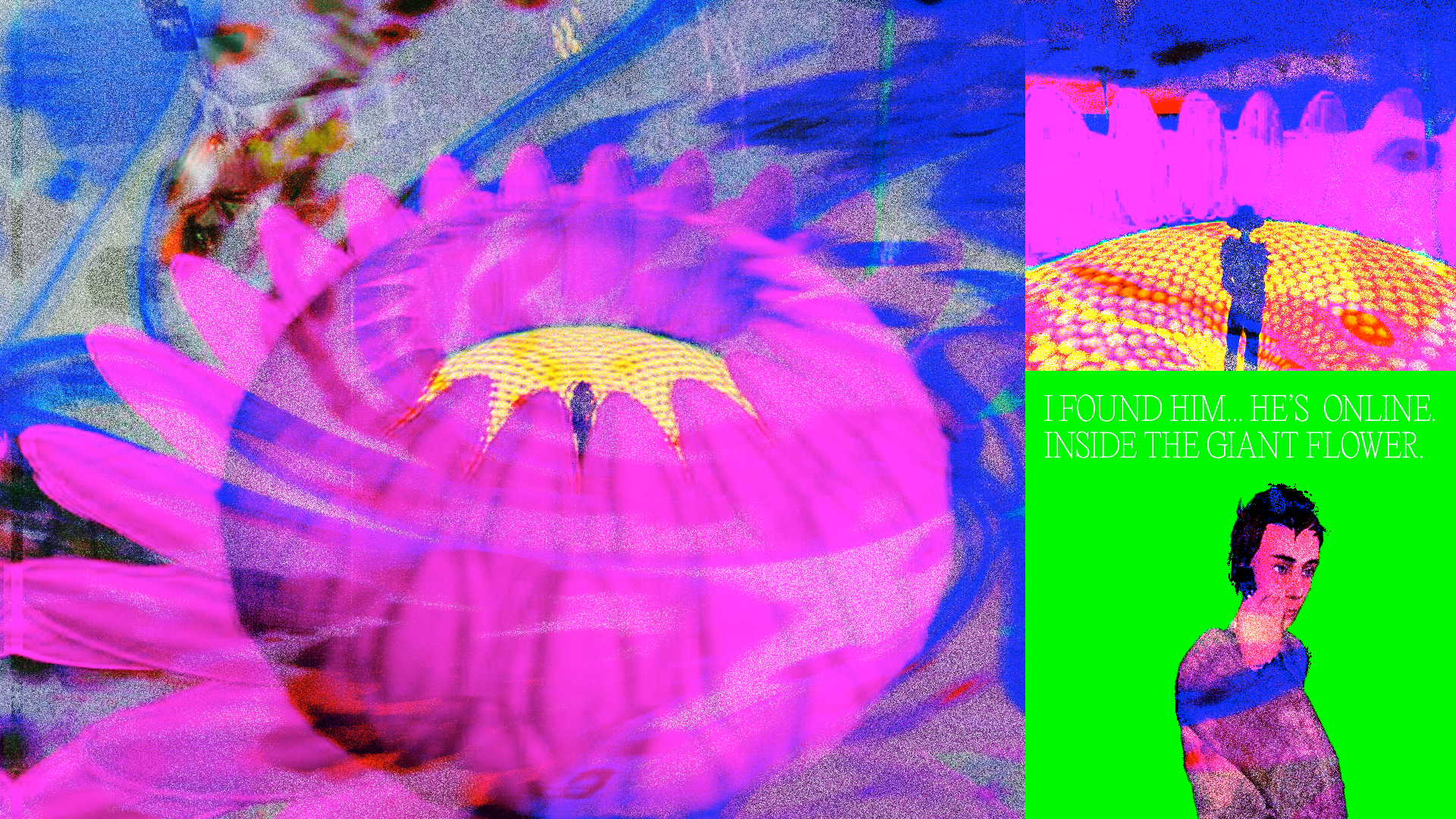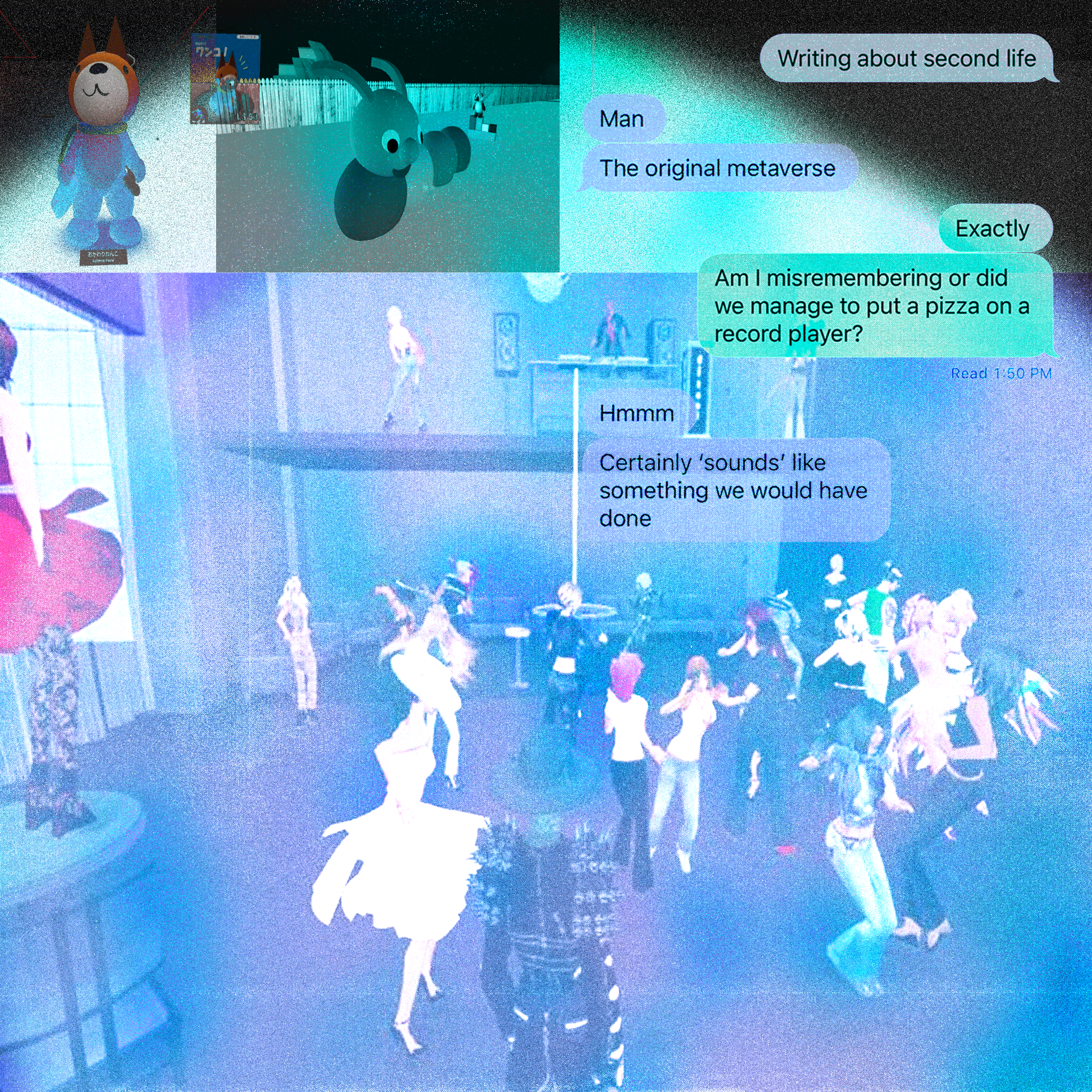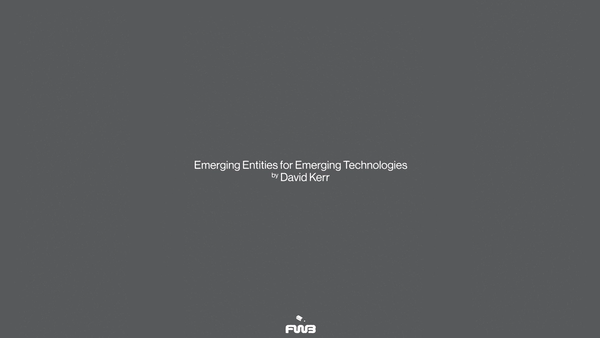- Ariel LeBeau
- Austin Robey
- David Blumenstein
- David Ehrlichman
- David Kerr
- Devon Moore
- Dexter Tortoriello
- Drew Coffman
- Drew Millard
- Eileen Isagon Skyers
- FWB Staff
- Greg Bresnitz
- Greta Rainbow
- Ian Rogers
- Jessica Klein
- Jose Mejia
- Kelani Nichole
- Kelsie Nabben
- Kevin Munger
- Khalila Douze
- Kinjal Shah
- Lindsay Howard
- Maelstrom
- Marc Moglen
- Marvin Lin
- Mary Carreon
- Matt Newberg
- Mike Pearl
- Moyosore Briggs
- Nicole Froio
- Ruby Justice Thelot
- Simon Hudson
- Steph Alinsug
- The Blockchain Socialist
- Willa Köerner
- Yana Sosnovskaya
- Yancey Strickler

Thu Mar 31 2022

When ApeCoin was announced on March 16, it was officially described as “a decentralized protocol layer for community-led initiatives that drive culture forward into the Metaverse.” I consider myself a member of “culture,” and I’m not averse to the Metaverse. But what does this place look like? This is an important question in the present, not just the future, because in case you weren’t aware, companies like Applebee’s are selling the Metaverse to their customers now. Wait, you don’t already own several of the NFTs in the restaurant chain’s Metaverse Meal collection?
In the process of manifesting the Metaverse, decentralized finance and NFTs are supposed to overlap with VR and other experiential online spaces, somehow. Mark Zuckerberg became so obsessed with Bitcoin, he named his goat after it; around the same time, he became so obsessed with the Metaverse he named his Fortune 500 company after that. But the marriage of the two concepts remains unconsummated. “Is it possible to take your NFT COLLECTIONS to horizon worlds?” one Redditor asked in /r/metaverse late last year, referring to Horizon Worlds, Meta’s still-in-progress VR platform. The top answer from another Redditor was “No. You can’t.” Zuck has yet to elucidate his vision of the Web3 promised land, let alone demonstrate that he is the chosen one to lead us all there.
Within the crypto community, the refreshingly Zuckless platforms vying for this piece of the market include Decentraland, whose currency, MANA, has a market cap of almost $5 billion as of this writing, and The Sandbox, which recently took in almost $100 million of investment money from SoftBank. These platforms are notable at the moment for their potential, as well as the massive amounts of capital being thrown both at them by VC firms — and, occasionally, within their meta-walls. If you’re a crypto outsider in Decentraland, there’s not all that much excitement to be found in soaking up other people’s experiments with scarcity and ownership. If you have enough MANA, you can spend the equivalent of hundreds of dollars on a single Decentraland wearable, like, say, a mariachi hat. But if you’re anything like me, Decentraland in its current form just feels like a very expensive — and very limited — version of something that’s been around for almost two decades: Second Life.
For better or worse, when they write the history of decentralized commerce in the virtual sphere, it might look a lot like the story of Second Life, the Burning Man-inspired online platform for self-expression and virtual communities which launched in 2003 and still runs to this day. If scarcity is your thing, look no further than Second Life’s legendarily overpriced digital real estate market. But unlike in Decentraland, the market for Second Life digital goods is much more of a free-for-all of fungible 3D models, which means a Second Life mariachi hat costs the equivalent of less than a dollar. While Second Life is perhaps most notorious for being a place where people staged virtual sex between avatars that look like GTA NPCs, that’s just one headline-grabbing example of what goes on in a place where basically everything exists in some form or another.
In about 2006, a vast Second Life hype machine materialized, telling us all that one day soon, the platform would be a staple of normal life. Instead, we got smartphones, and most of us forgot about Second Life altogether. But a small subset of true believers just held on, and seemingly will forever. Maybe you’ve seen Second Life’s dead-enders in viral videos like this one:
To be clear, Second Life, and its parent company, Linden Lab, always had problems — even in the platform’s heyday. Some of the more famous ones include the relentless reign of terror by overtly racist trolls, unregulated gambling that ended up getting shut down by the FBI, and the difficulty of policing for apparent sex crimes on the platform. The Second Life discourse was so pervasive that at its peak, even The Office was making fun of it. But for a while there, it was a special and unique place where millions of people hung out. Second Life had reasons to exist, but unfortunately, those reasons tend to be a little amorphous and dreamlike in retrospect. In short: you had to be there. But I’ll try to explain it anyway, in the hopes that the new iteration of the metaverse everyone’s talking about can capture a fraction of Second Life’s glory.
I spent part of my friend’s 21st birthday in Second Life, back in 2005. That probably sounds pretty weak. After all, ones and zeros aren’t affected by alcohol. At a bar in the real world, you buy round after round of drinks to get your friend uncomfortably hammered. A 21st birthday in Second Life is a little different. You might use some of your hard-earned Linden Dollars (that’s what the currency was called there) to gift your friend a hairstyle that looks like a lampshade on their head and an animation of them stumbling around and falling over. Or, if you know how, you could make a model of a pizza spinning on a record player to suggest a really wild party. For us, having fun in Second Life basically meant feeling like you were getting away with something, even though we were using it exactly as intended.
Today we remember my friend’s Second Life birthday bender about as well as a real-life one, which is to say: hazily.
Just writing out my fuzzy recollections can’t do justice to the experience of Second Life during its Golden Age. I’m not alone.

“I wish I could find the aesthetics from the early days and turn them into NFTs, because it was so bizarre, the kinds of things people would attach to their personas. It was sort of like a collage,” said Renata Morais, a Web3 researcher at Dubai Institute Of Design and community builder at Chainforest DAO. In the mid-2010s, some of her academic research focused on culture in Second Life, but before that, she had just enjoyed getting weird there like so many of us.
The early Second Life aesthetic she referred to can be seen in YouTube videos from back then. An unkind description might include adjectives like “janky” or “laggy,” but that wouldn’t be fair. “Beautifully broken” might be a better way of putting it.
“People did something like hacks in the code,” Renais told me. “If you were really good, you could take your avatar, hack your way in, and distort different elements of how people would interact with you.”
“It created this interesting laboratory to explore what’s possible,” said Bernadett Köles, who researches marketing and consumer behavior at France’s Institute of Scientific Economics and Management. In the early 2010s, she and her research partner Peter Nagy, now a media Scholar at Arizona State University, focused on the “congruence” of aspects of life in and out of virtual environments. As researchers who took Second Life seriously back when it was relatively new, they’ve found themselves suddenly in demand from Web3 bulls, and journalists like me looking for expertise.
Their 2014 paper, “The digital transformation of human identity: Towards a conceptual model of virtual identity in virtual worlds,” has attracted particular attention. What they were trying to figure out was basically this: Do people enter virtual spaces in order to enact impossible fantasies, or just to be a slightly tweaked, digital version of themselves?
According to Nagy, Second Life users back then were more attached to their corporeal forms than you might think. “Virtual worlds allow you to do things that you cannot do in an offline world, like flying, or modifying [your self-image] and becoming an elf, or a gnome, or a demon — anything,” Nagy said. “At the core, you’re also going to be the same person, but capable of doing things that you are probably not able to do in an offline environment.”
There can be immense comfort, and even empowerment, in creating and maintaining an avatar that represents who you really are, particularly if your outward-presenting gender in the real world was not the one you identify as. But speaking as someone with a physical body that more or less matches who I believe I am inside, the novelty of a different human body as an avatar wears off pretty quickly. And that’s not to mention the novelty of a fantastical body — like a Na’vi with a giant blue boner, or someone with dragon scales and horns. In Second Life, I usually just wanted to look basically like myself, with maybe a fresher haircut and a nicer outfit. Renais said the same of her avatar: “I was just trying to make a replica of me.”
So being in Second Life was as much about what you could experience as it was forming an identity — maybe more so.

Much in the way that today’s Web3-related media is overly focused on things that don’t matter all that much, like Paris Hilton and Jimmy Fallon showing off their Bored Apes, media coverage back then didn’t do a fantastic job of explaining what you could experience in Second Life during Second Life-Mania. And it was similarly enamored with corny celebrity promos. When Ben Folds performed a Second Life concert on behalf of the Aloft hotel chain, the .
But that 2006 New York Times article does give a little bit of space to one of the more fascinating goings-on in Second Life at the time: Svarga.
As you can see from the video above, Svarga was a user-created island in Second Life that looked like the sort of ruined temple complex surrounded by lush, overgrown greenery that you might find rendered more prettily in an Uncharted game. But what Svarga offered that Uncharted never could was that it was alive. It contained birds, bees, plants, and its own weather, all of which interacted with one another in unpredictable ways to create a rudimentary ecosystem. As a visitor, you could spend Linden Dollars on birdseed to feed the birds, and the birds’ eating habits in turn had a long-term effect on plant seeds, and — since they also ate bees — pollination. Plant “genes” could mingle and create new plants with new properties that were never explicitly intended by Laukosargas Svarog, Svarga’s mysterious and seemingly pseudonymous creator — Svarog being the name of a Slavic sky god — who says she worked in “the UK music and game industry,” though probably under a different name.
The Second Life users who visited Svarga were changing it by being there, and that’s what Svarorg intended. She explained to New World Notes, probably the internet’s oldest metaverse news site, that the concept of “emergence,” a term from systems theory, was at work in Svarga. And her description might sound familiar to anyone who follows the emergence of COVID-19 variants now 16 years later:
“[I]f a gene emerges which gives a plant an extra seed in its lifetime, that can cause huge growth in its locale. And the opposite of course, one less causes thinning growth. I’ve also seen the same color become a dominant gene so all the meadow cup plants became blue once. Simple things like that emerge quite often."
The concept of emergence must surely have been at work in a more comprehensive sense all over Second Life back then. Or, if that’s too grandiose, then the mood, the aesthetic, and the culture in Second Life all converged to create something better than the sum of its parts. Then, slowly but surely, Second Life’s subtle beauty fell away. Svarga was sold in 2008, and vanished in 2009. Linden Lab bought it and resurrected it in 2010, but users say it doesn’t work the way it used to. After years of software updates and no obvious attempt to keep Svarga up-to-date, the clouds in the remnants of Svarga look like puny cartoon wisps. There’s little, if any, evidence of the random environmental change that used to go on there.

Brett Webb worked at Linden Lab during what I’ll call The Decline of the Golden Age — i.e., from the end of 2009 until the end of 2011. Despite all the hype, Second Life had become a silo for a small, dedicated user base, and they were desperate to expand, deploying new strategies like interoperability of avatars with other platforms. Webb was, he told me, “towards the top of the funnel,” working in user acquisition, attempting to convert neophytes into “long-term, engaged residents of Second Life.” He compared the process to dragging oneself across broken glass.
Second Life was a “great creation tool,” Webb told me, but it was overwhelming to most new users. The leap from novice to “resident” was too great, and perhaps most importantly, it “wasn’t always clear what you should be doing.”
So Linden Lab hired so-called “experience curators” to show new users around, teleport them to stuff that might wow them based on their stated interests, and inundate them with helpful tips. Linden staff members had a short time window to convince new users to customize their avatars, visit a couple of particularly illuminating and appealing geographic landmarks, and make a friend. “If [the user] could do those things in the first, like, 15 minutes, you were almost guaranteed to stay long enough to pay off the cost of acquisition,” Webb said.
Understanding the finer points of Second Life — especially creating costumes, animations, and environments rather than simply buying them — was part of its appeal during the Golden Age. As Second Life tried to broaden its reach, something seems to have gotten lost. “It’s really hard to build in 3-D,” Webb told me, comparing early Second Life modeling to the “primitive” tools people are using to create NFTs today.
Around the time Webb left Linden Lab in 2011, people were writing Second Life obituaries and cringing at all their past predictions about Second Life taking over the world. As you can imagine, some time between then and now, the Second Life aesthetic went from the jankily sublime beauty of its early days, to what it looks like lately:
Other platforms have emerged in the meantime that don’t have the same “what am I supposed to be doing?” problem as Second Life. Fortnite comes to mind, particularly its 2020 concert event starring Travis Scott. Webb recalls thinking that the concert looked like “what we did in Second Life ten years ago,” but he also noted that once the concert was over, Fortnite also offered users an experience that would “give them something fun to do that would keep them engaged over and over again.”

It’s easy to imagine how products like Minecraft, Fortnite, and Apex Legends could be templates for some kind of metaverse killer app in the near future. But I don’t think anyone really wants all this metaverse hype to add up to an immersive, addictive timewaster in VR, featuring the ability to make your favorite Bored Apes into unique avatars. I do think that’s a plausible direction for the Metaverse — and Second Life’s DNA would undeniably be all over that — but the concept rings a little hollow. And while platforms like Decentraland and The Sandbox hope to take Second Life’s former glory and put it on the blockchain, it’s likely that these virtual worlds will find success on their communities’ terms, rather than those of their investors. Then again, maybe that’s a healthier outcome all around.
Morais, for her part, favors a pluralistic metaverse: a collection of “pluriverses” that don’t consolidate around one platform. Picture an internet where Meta’s Horizon Worlds, some new VR version of Minecraft, and, who knows, maybe even a version of Second Life that recaptures its former glory, would all coexist. Such an outcome could even cast off the challenge of making the virtual world try to take over the real world like Second Life failed to do.
“When something gets too big, it loses the aura of uniqueness and becomes less magical,” she said. “That is also why I find the idea of pluriverses so powerful. The more pluriverses the better, what we wish to avoid is to drown beneath a Tsunami of mainstream metaverses. That’s my humble take.”
Original Second Life photographs by Chris Carella, edits and design by Fiona Carty.


